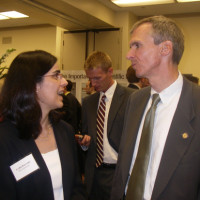Computing: All Our Constants Are Variables
We humans are not particularly good predictors of change, particularly exponential change. We tend to extrapolate tomorrow from today—geometrically, two points do define a straight line, after all. In the near term, that is a safe and reasonable expedient. However, we, of all disciplines, know that the pace of change is accelerating, with ever greater global connections and greater social, economic and scientific interdependence. In turn, this has profound implications for computing education, research, employment and societal engagement.








